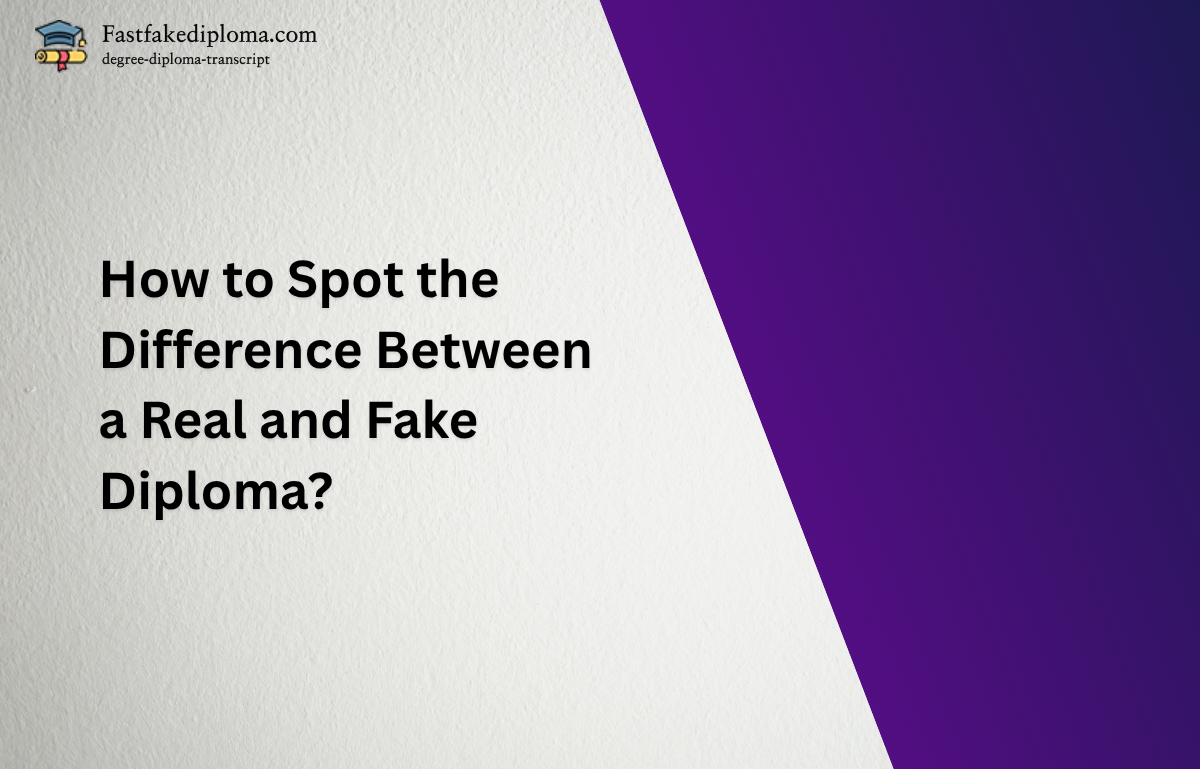Education qualifications play an important role in career opportunities in today’s competitive society. Unfortunately, this growing demand has led to an increase in false degrees and degree certificates. For employers, educational institutions, or those in a position to confirm their qualifications, it is essential to discern the difference between fake diploma vs real, This article explains important points and procedures for authentication of a trusted degree certificate.

1. Check the Institution’s Accreditation
One of the first signs of a false degree is a suspicious or unaccredited issuer. Authentic degrees are always issued from accredited universities and junior colleges. Collate institutions with official government agencies and accredited organizations’ websites. If the university is not on the list, it is a serious warning sign.
2. Look Closely at the Design and Print Quality
Visual presentations are important when comparing a counterfeit degree certificate with a genuine degree certificate. Authentic degree certificates are printed professionally using high quality paper, embossed seals, watermarks, and in some cases holograms. On the other hand, counterfeit degree certificate is a cheap impression, ink blot, character deviation, suspicious logo may stand out. Misspellings and formatting errors are often seen as signs of forgery.
3. Inspect the Signatures and Seals
Authentic degree certificates include official signatures of officials of institutions such as presidents and deans. These signatures should match the samples and styles commonly used in that university. Fake degree certificates may confirm symbols that do not match general digital printing signatures, lack of official seals, or regular versions.
4. Verify the Graduation Details
Another valid way to verify the authenticity of a degree is to check a student’s graduation year, course name, and major. Inaccurate or inconsistent information, such as the undergraduate does not match the course or the graduation date does not match the academic calendar, may indicate a false degree.
5. Contact the Institution Directly
The most reliable way to identify a false degree is to contact the university directly. Most universities can provide verification services or check the name of the graduate, type of degree, and date of completion. This procedure is frequently used by employers when conducting background surveys.
6. Use Online Degree Verification Tools
Multiple online services and background research platforms help verify your academic background. These tools are especially useful for HR departments to quickly distinguish between false and genuine degrees. Be careful with websites that claim “immediate degree verification” without appropriate data sources. These may also be fraudulent.
7. Review the Language and Wording
Authentic degree certificates use formal and specific language and academic terms. False degree certificates may include ambiguous expressions, non-professional words, or generic expressions. For example, if it is described as a “Bachelor of Science in General Education and Business Leadership” by a university not known for its major, consider it questionable.
Final Thoughts
The ability to identify false and real degrees is becoming increasingly important. As counterfeit degree sellers become more successful, the ability to thoroughly verify the authenticity of the degree is essential for maintaining academic integrity and labor standards.
If you are looking for a high-quality novelty degree certificate for personal, alternative or entertainment purposes, visit FastFakeDiploma.com It is a reliable source that provides professionally created custom degree certificates and transcripts.

 Fake Degree
Fake Degree